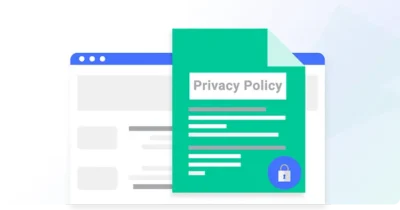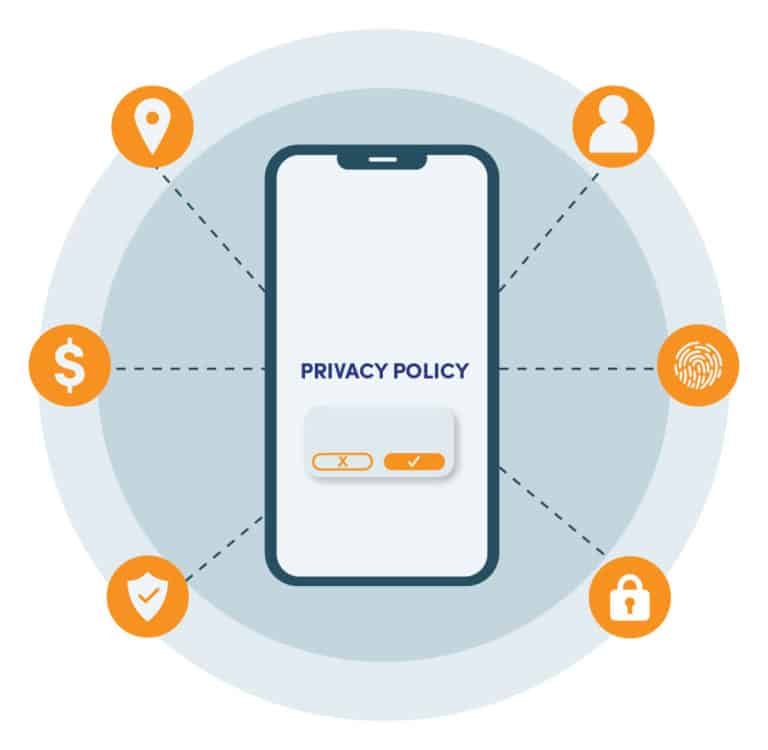Introduction
In the digital age, where mobile apps are an integral part of our daily lives, ensuring the privacy and security of user data has become paramount. With the increasing awareness and concern about data privacy, mobile app developers and companies must prioritize compliance with various data privacy regulations. This blog post aims to guide you through the essential steps and best practices for ensuring that your mobile app’s privacy policy is not only compliant with these regulations but also effectively communicates your commitment to user privacy.
Data privacy compliance is no longer just a legal obligation; it’s a critical aspect of gaining and maintaining user trust. Your mobile app privacy policy serves as a transparent communication tool between your app and its users, explaining how their data is collected, used, and protected. This blog post will delve into the intricacies of creating a robust mobile app privacy policy, ensuring it aligns with the latest regulations and best practices in data privacy and application security policies.
Understanding the Importance of a Mobile App Privacy Policy
A mobile app privacy policy is not just a legal requirement; it’s a cornerstone of your app’s trustworthiness. This section discusses the significance of a well-crafted privacy policy and how it impacts user trust and legal compliance. The creation of a privacy policy must be approached with a thorough understanding of the various data privacy laws that apply to your app, depending on its geographical reach and the nature of the data it handles.
Developing a privacy policy for your mobile app is an opportunity to demonstrate your commitment to user privacy and transparency. This section explores the elements that make up an effective privacy policy, such as clear language, comprehensive data usage explanations, and the inclusion of user rights. A good privacy policy not only meets legal standards but also aligns with user expectations and industry best practices.

Aligning with Data Privacy Regulations
In the landscape of global data privacy regulations, aligning your mobile app privacy policy with these regulations is crucial. This section delves into the key legislations such as GDPR, CCPA, and others, explaining their relevance to mobile apps. Understanding these regulations helps in creating a policy that is not just compliant but also comprehensive in its scope of data protection.
Adapting your mobile app privacy policy to these regulations requires a deep dive into the specifics of each law. This section provides practical steps to ensure compliance, such as data minimization, obtaining user consent, and implementing robust security measures. It’s crucial for developers to stay updated on the evolving landscape of data privacy laws to ensure ongoing compliance.
Crafting a Comprehensive Privacy Policy
The core of a mobile app privacy policy lies in its comprehensiveness and clarity. This section guides you through the essential components of a privacy policy, including data collection methods, usage, and sharing policies. A well-drafted policy clearly outlines the types of data collected, the purposes for which it is used, and how it is protected.
Beyond the basic elements, your privacy policy should also address specific user concerns and legal requirements. This section explores the importance of including information on user rights, data retention policies, and third-party data sharing. The goal is to create a policy that is not only legally compliant but also user-friendly and transparent.
Implementing and Updating Your Privacy Policy
Implementing your mobile app privacy policy goes beyond just drafting the document. This section discusses the importance of integrating the policy into your app’s design and user experience. It’s essential to make the policy easily accessible and understandable to users, often requiring creative and thoughtful design choices.
Keeping your privacy policy updated is as crucial as its initial creation. This section provides strategies for regularly reviewing and updating your policy to reflect changes in laws, technology, and your app’s functionality. Staying proactive in policy updates ensures continuous compliance and reinforces user trust.
Ensuring Application Security Policy Compliance
While your mobile app privacy policy addresses data usage, an application security policy ensures the data’s safety. This section highlights the importance of a robust application security policy in complementing your privacy policy. It covers the best practices in app security, such as encryption, regular security audits, and vulnerability testing.
Integrating your application security policy with your privacy policy provides a holistic approach to data protection. This section explains how both policies work together to ensure the highest standards of data privacy compliance and security, offering users a secure and trustworthy app experience.
Building User Trust Through Transparency
Transparency in your mobile app privacy policy is key to building and maintaining user trust. This section discusses how clear communication about data practices can enhance user confidence in your app. It emphasizes the need to avoid jargon and use language that is easy for users to understand.
Engaging with users about your privacy practices is not a one-time effort but an ongoing process. This section provides tips on how to keep users informed about updates to your privacy policy and involve them in privacy-related decisions. Transparency is not just about compliance; it’s about creating a relationship of trust with your users.
Regularly Reviewing and Updating Privacy Practices
The digital world is constantly evolving, and so are data privacy regulations. This section emphasizes the importance of regularly reviewing and updating your mobile app privacy policy. It suggests setting up a schedule for policy reviews and staying informed about changes in data privacy laws and technologies.
In addition to legal compliance, this section also explores how regular updates to your privacy policy can reflect your app’s growth and changes. It’s essential to ensure that your policy remains relevant to your app’s current functionalities and user base. Continuous improvement of your privacy practices is a sign of your commitment to user privacy.

Conclusion
In conclusion, ensuring your mobile app complies with data privacy regulations is a multifaceted process. It involves creating a comprehensive mobile app privacy policy, aligning with data privacy compliance, implementing robust application security policies, and maintaining transparency and trust with your users. As mobile apps continue to play a significant role in our daily lives, the importance of data privacy cannot be overstated.
Your commitment to data privacy and security is not just a legal obligation but a crucial factor in building and maintaining user trust. A well-crafted mobile app privacy policy, combined with strong application security measures, sets the foundation for a trustworthy app. Regularly updating your policies and practices in line with evolving regulations and technologies is key to staying compliant and keeping user trust intact.
Remember, your mobile app privacy policy is more than a document; it’s a reflection of your app’s values and your commitment to protecting user data. By following the guidelines and best practices outlined in this blog post, you can ensure that your mobile app not only complies with data privacy regulations but also stands out as a model of user privacy and security in the digital world.
How do I create a privacy policy for my mobile app?
To create a privacy policy for your mobile app, follow these steps:
Clearly state what personal information you collect from users.
Explain how you use and store the collected information.
Describe any third parties with whom you share the information.
Provide details on how users can access, update, and delete their personal information.
Outline the security measures you have in place to protect user data.
Include information about the use of cookies or other tracking technologies.
Comply with relevant privacy laws and regulations, such as the GDPR or CCPA.
Use clear and concise language that is easily understood by your app users.
Make the privacy policy easily accessible within your mobile app.
Regularly review and update the privacy policy as needed to reflect any changes in data handling practices or regulations.
Note: It is recommended to consult with a legal professional to ensure your privacy policy meets all legal requirements and adequately protects user data.
Do you need a privacy policy for a mobile app?
Yes, you need a privacy policy for a mobile app.
How do you develop an app privacy policy?
To develop an app privacy policy, follow these steps:
Start by outlining the types of user data your app collects and how it is obtained.
Specify the purpose of collecting each type of data and how it is used.
Describe how you protect user data and what security measures are in place.
Explain if and how third parties may access or handle user data.
Clarify how users can exercise their rights regarding their personal information.
Inform users about any data retention policies you have in place.
Describe how you handle children’s personal information, if applicable.
Provide contact information for users to reach out with privacy-related concerns.
Review and revise your privacy policy regularly to ensure compliance with laws and changes in data practices.
Note: This information is provided for general guidance only and does not constitute legal advice. It is recommended to consult with a legal professional to ensure your privacy policy meets all necessary legal requirements.


